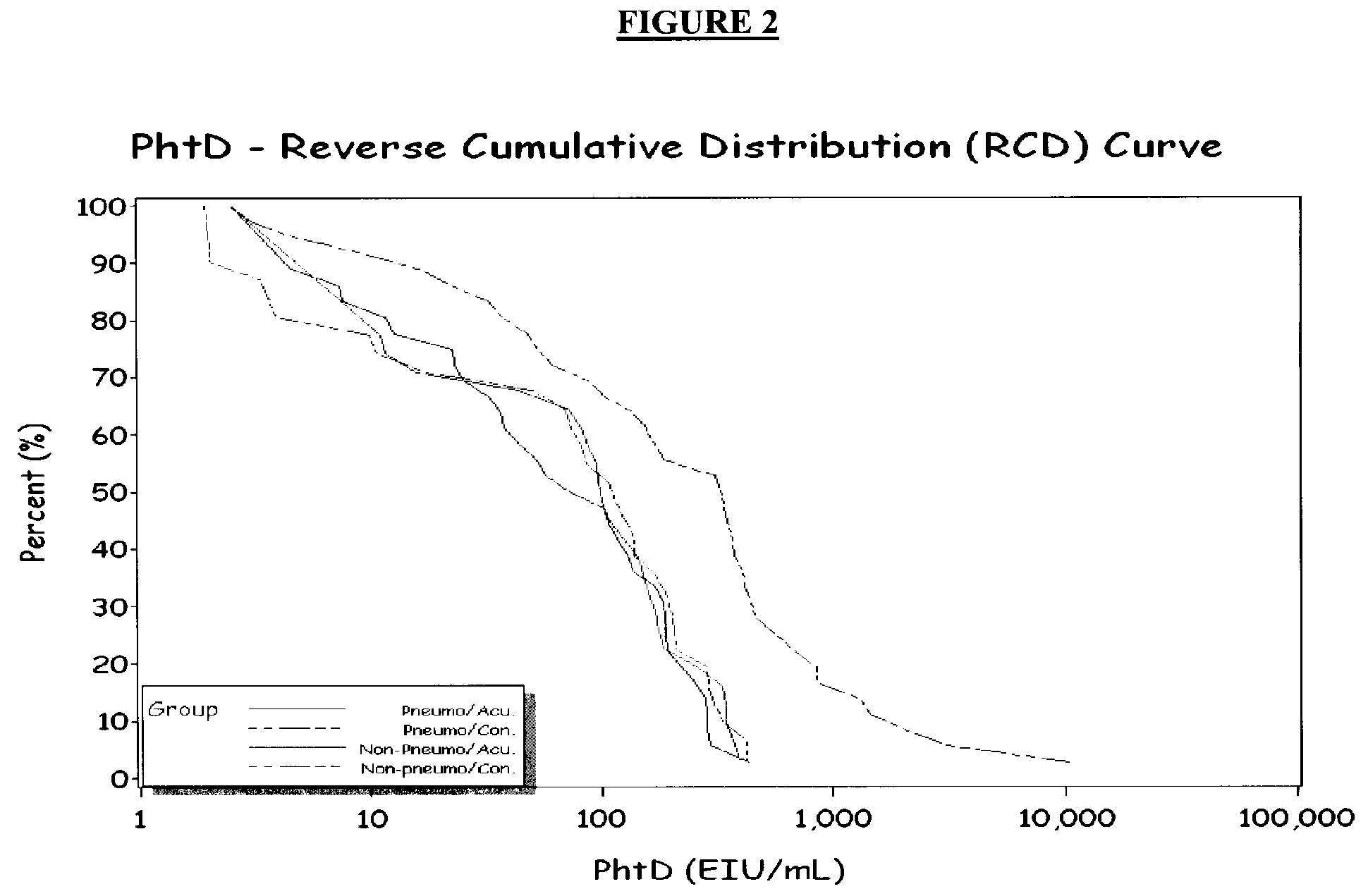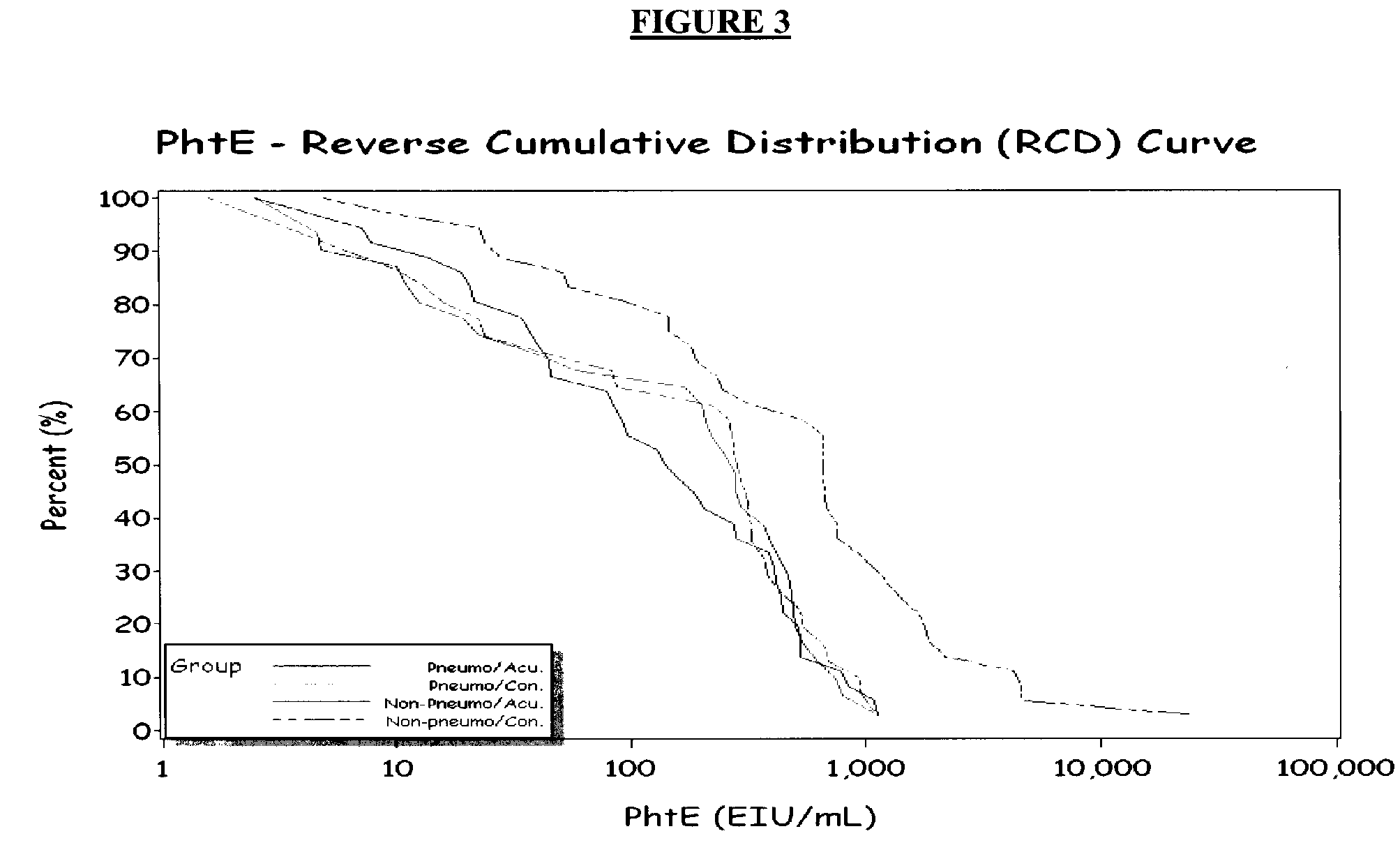Assay for diagnosing Streptococcus pneumoniae
a technology for detecting streptococcus pneumoniae and a test is applied in the field of reagents and methods for diagnosing bacterial infections, which can solve the problems of limiting the usefulness of microbial detection, etiological diagnosis is particularly difficult, and lack of protective antibodies against pneumococcal antigens
- Summary
- Abstract
- Description
- Claims
- Application Information
AI Technical Summary
Benefits of technology
Problems solved by technology
Method used
Image
Examples
example 1
Materials and Methods
[0035]Ninety-nine children aged 2 months to 6 years were enrolled in a prospective cohort study at admission for CAP to the pediatric wards of the University Hospitals of Lausanne and Geneva (Switzerland) between March 2003 and December 2005. Children were eligible if presenting with clinical signs of pneumonia according to the WHO classification (ref), children with actively treated asthma, chronic illness or underlying disease, immunosuppression or presenting with wheezing (suspected bronchiolitis) being excluded. None had been immunized against S. pneumoniae, according to the Swiss recommendation in 2003-2005. They were enrolled after signed parental content, as approved by the Ethical Committee of both institutions.
[0036]Blood, urine and nasopharyngeal samples were cultivated within 8 hours of admission and assessed for the presence of viruses or bacteria. PCR analyses on nasopharyngeal samples included 13 viruses, Mycoplasma pneumoniae, and Chlamydia pneumo...
example 2
Experimental Results
A. Evidence of Acute Pneumococcal Infection in Children with Cap
[0040]Seventy-five previously healthy children (mean age 33.7 months, median 35.4 months, range 2.6 to 66 months, 50% females) were enrolled at admission and provided both acute and convalescent sera for this prospective study of CAP-associated anti-pneumococcal immunity. Only one child had a positive blood culture whereas 15 / 75 (20%) patients had pneumolysin DNA (Ply+-PCR) in their blood. The use of serum IgG seroresponses to Ply (≧2-fold increase between acute and convalescent sera) identified 16 / 75 (21%) children with evidence of an acute pneumococcal infection (Table 1). This proportion increased to 31% ( 23 / 75) when combining Ply+-PCR and / or anti-Ply seroresponses, which is in accordance with recent reports (reviewed by Korppi M, Eur J Clin Microbiol Infect Dis 2007).
[0041]To identify further children with evidence of acute pneumococcal infection, we used four additional PSP (PhtD, PhtE, LytB, a...
PUM
| Property | Measurement | Unit |
|---|---|---|
| pH | aaaaa | aaaaa |
| excitation at wavelength | aaaaa | aaaaa |
| excitation at wavelength | aaaaa | aaaaa |
Abstract
Description
Claims
Application Information
 Login to View More
Login to View More - R&D
- Intellectual Property
- Life Sciences
- Materials
- Tech Scout
- Unparalleled Data Quality
- Higher Quality Content
- 60% Fewer Hallucinations
Browse by: Latest US Patents, China's latest patents, Technical Efficacy Thesaurus, Application Domain, Technology Topic, Popular Technical Reports.
© 2025 PatSnap. All rights reserved.Legal|Privacy policy|Modern Slavery Act Transparency Statement|Sitemap|About US| Contact US: help@patsnap.com



